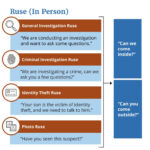Understanding the Definition Of Uniformed services is crucial when navigating U.S. law, particularly Title 10 of the United States Code, which governs the armed forces. This article delves into what constitutes “uniformed services” according to 10 USC 101, providing a comprehensive yet accessible explanation for both experts and those new to military legal frameworks.
What are Uniformed Services? A Legal Definition
The U.S. Code provides precise definitions for terms related to the military, and “uniformed services” is specifically outlined in 10 USC 101. This definition is not merely academic; it has practical implications across numerous legal and administrative contexts, affecting personnel benefits, jurisdictional issues, and the application of military law.
According to 10 USC 101 (a)(5), the term “uniformed services” encompasses a specific set of organizations. Let’s break down each component:
1. The Armed Forces
The most widely recognized part of the uniformed services is the armed forces. The statute, in 10 USC 101 (a)(4), clarifies that “armed forces” means:
- Army
- Navy
- Air Force
- Marine Corps
- Space Force
- Coast Guard
This list is exhaustive and explicitly names each branch, ensuring clarity in legal interpretations. It’s important to note that while the Coast Guard is listed under armed forces and thus uniformed services, its operation differs. As defined in 10 USC 101 (a)(9), the Secretary of Homeland Security has authority over the Coast Guard, except when it operates as a service in the Department of the Navy, at which point the Secretary of the Navy is the “Secretary concerned.”
2. Commissioned Corps of the National Oceanic and Atmospheric Administration (NOAA)
Beyond the traditional military branches, the commissioned corps of the National Oceanic and Atmospheric Administration is also included in the definition of uniformed services (10 USC 101 (a)(5)(B)). This inclusion recognizes the NOAA Corps’ unique role in environmental stewardship and scientific missions, often conducted in hazardous conditions that parallel military service. NOAA Corps officers wear uniforms and adhere to a rank structure similar to the Navy, further blurring the lines and solidifying their place within “uniformed services”.
3. Commissioned Corps of the Public Health Service (PHS)
Finally, the commissioned corps of the Public Health Service completes the definition of uniformed services (10 USC 101 (a)(5)(C)). The PHS Commissioned Corps is a uniformed federal service dedicated to protecting and advancing the nation’s health. Its officers, like those in the NOAA Corps, wear uniforms and hold ranks equivalent to the military, reflecting their service and readiness to respond to public health crises, both domestically and internationally.
Why is the Definition of Uniformed Services Important?
The legal definition of “uniformed services” is not just a matter of semantics. It carries significant weight because it determines:
- Eligibility for Benefits: Veterans’ benefits, healthcare provisions, and other entitlements often hinge on whether an individual served in the “uniformed services.”
- Legal Jurisdiction: Military law, including the Uniform Code of Military Justice (UCMJ), applies to members of the uniformed services.
- Inter-agency Cooperation: Defining uniformed services facilitates cooperation and understanding between different government departments, particularly the Department of Defense, Department of Homeland Security, Department of Commerce (for NOAA), and Department of Health and Human Services (for PHS).
- Mobilization and Deployment: In times of national emergency, members of the uniformed services, including NOAA and PHS corps, can be mobilized and deployed to support broader national objectives.
Conclusion: Clarity in Definition for Service and Law
The definition of uniformed services as laid out in 10 USC 101 is a cornerstone of U.S. military and federal law. It carefully delineates the organizations whose members are recognized for their uniformed service to the nation, extending beyond just combat roles to include vital functions in science and public health. This clear definition ensures legal precision and facilitates the fair and effective administration of laws and benefits for those who serve in these critical capacities. Understanding this definition is essential for anyone working with or within the U.S. military and federal systems.


